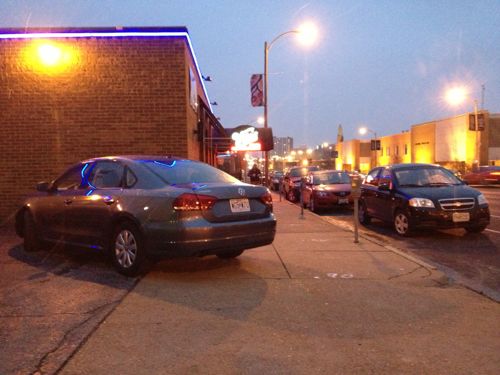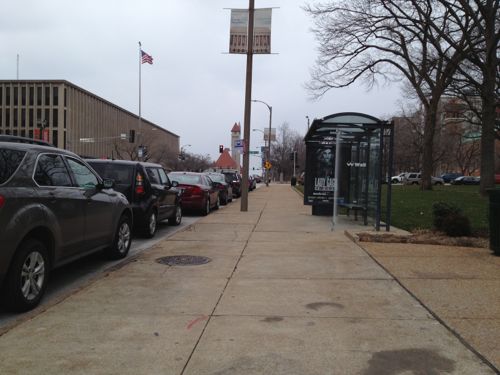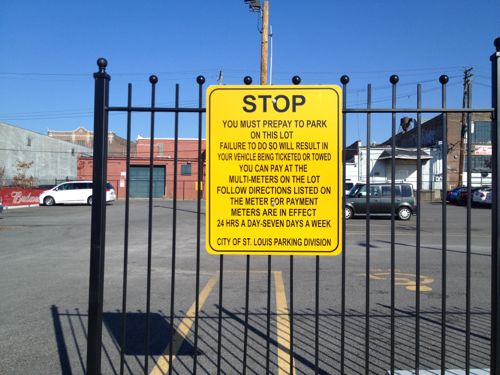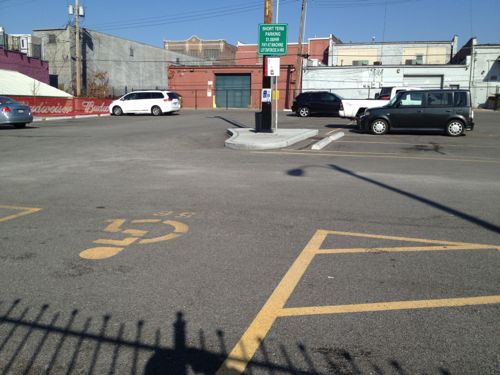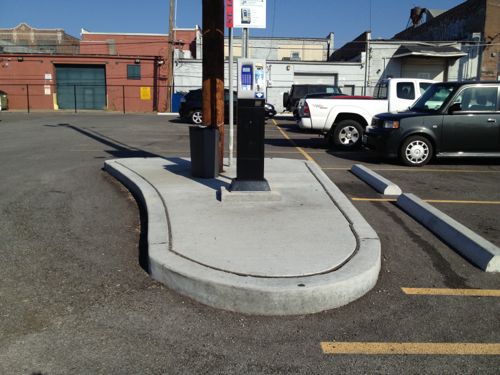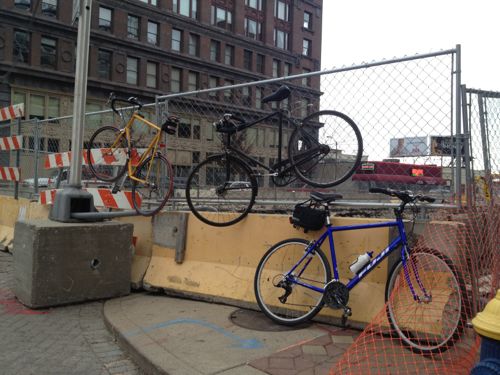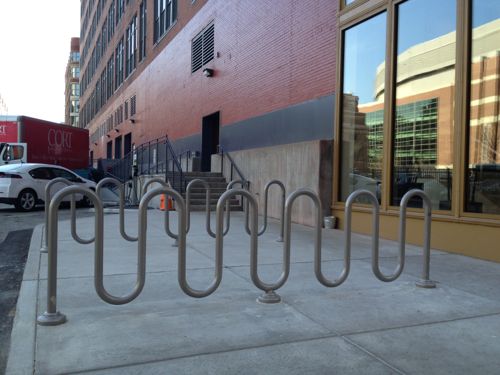Metered Parking Space Ends Unclear To Some Drivers
It’s been 30+ years since I took driver’s ed in high school so I don’t recall what we learned about parallel parking. My guess is it focused on the mechanics of backing into a space between two cars. I do remember having to parallel park for my driver’s exam, we had to go to Will Rogers World Airport because no where else in south Oklahoma City had parallel parking.
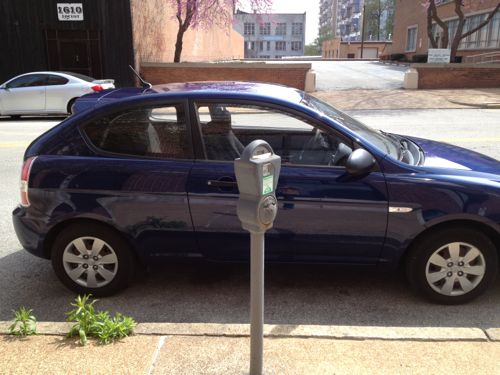
It seems to me it isn’t common knowledge that spaces exist from meter to meter. When I took the above picture there were no other cars in front of or behind. I’ve seen people drive up and park this way simply because they don’t know any better. Not sure what they do in places like the 12xx-17xx blocks of Washington Ave where two meters are grouped to reduce the number of poles.
The Missouri license exam also focuses on the mechanics, but not identification of what is a space:
2. Park parallel to the curb, in a space 25 feet long and 7 feet wide. You will be tested for:
- The position of your vehicle before backing.
- Whether or not you bump into the space markers.
- Moving into the space smoothly and at the right speed. • Parking no more than 18” from the curb.
- Parking near the center of the space.
- Ability to park the vehicle within two minutes.
- Turning the wheels in the correct direction for parking.
- Checking traffic and signaling before you leave the parking space.
Testing to make sure you get in the center of the space, the driver above may think they nailed it.
The obvious fix is to do what Clayton does, paint lines on the pavement to indicate the space start and end. But that would require lots of labor since the city has thousands of metered spaces. My preference is to remove the individual meters and go to a pay and display system:
Pay and display systems differ from road-side parking meters in that one machine can service multiple vehicle spaces, resulting in lower set up costs. In addition, this system theoretically prevents drivers from taking advantage of parking meters that have time remaining; this factor alone has doubled parking revenues in cities that have switched to pay and display.(A driver may occasionally take advantage of remaining time should a departing parker give away a ticket with remaining time, however.)
Message reads “This machine will calculate the correct parking period for whatever value of coins you insert subject to a minimum charge of 40p and a maximum of £9.60”
In addition, pay and display machines can also accept a wider variety of coins, and many even accept credit cards, making it unnecessary for drivers to carry large amounts of change. The use of credit cards has another advantage – the machines do not have to be emptied of coins as often, and the costs of counting coin and possible pilfering by employees who empty the parking meters also reduces their overall costs. (Wikipedia)
With pay and display you don’t have designated spaces, sometimes allowing for more cars to fit into a given area. However, you can still end up with drivers that park too far from another vehicle, reducing the number of cars that’ll fit.
In the meantime, I’d like to see these motorists get a warning along with an educational piece explaining how to park at parking meters.
— Steve Patterson
